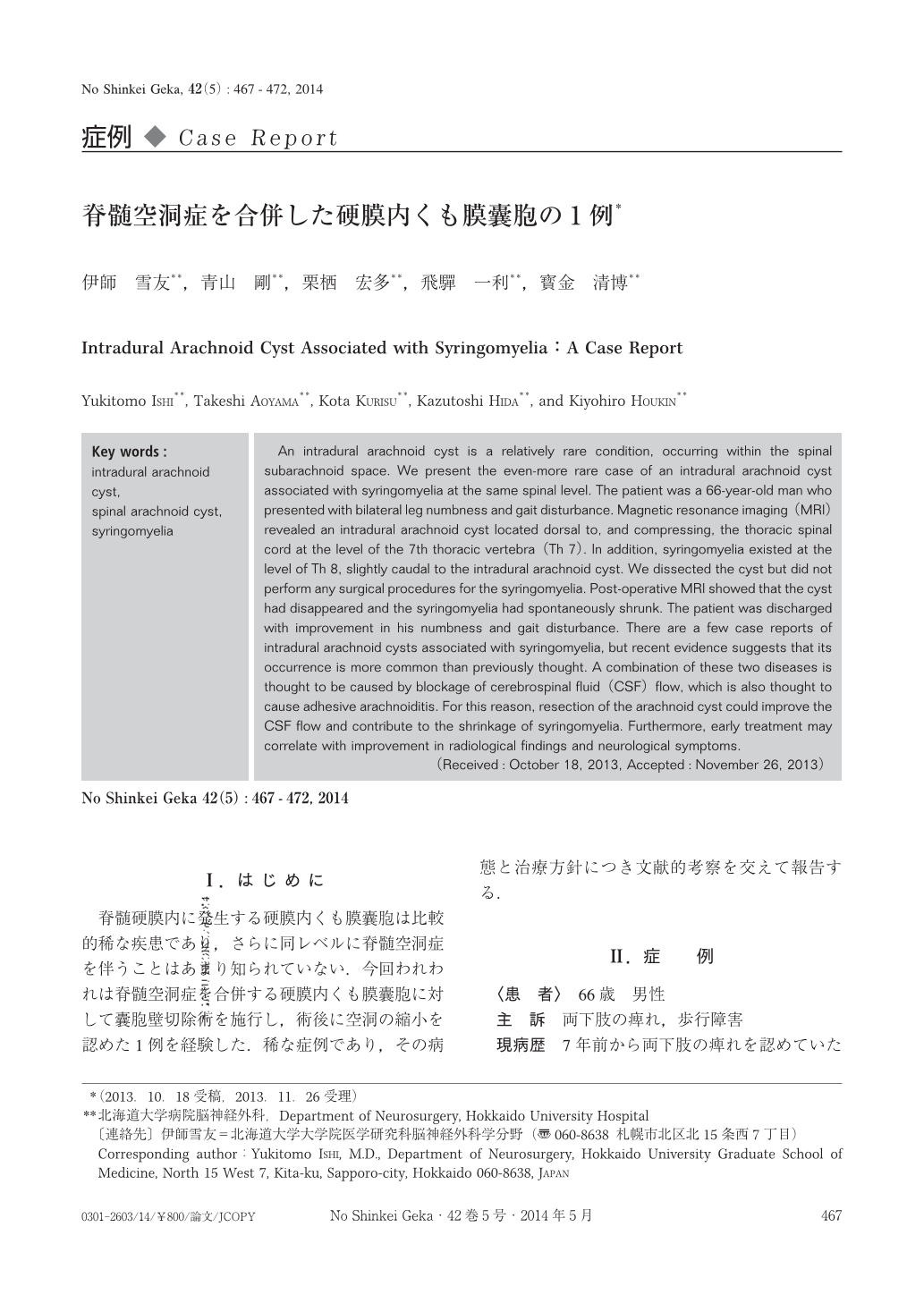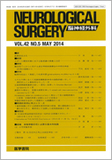Japanese
English
- 有料閲覧
- Abstract 文献概要
- 1ページ目 Look Inside
- 参考文献 Reference
Ⅰ.はじめに
脊髄硬膜内に発生する硬膜内くも膜囊胞は比較的稀な疾患であり,さらに同レベルに脊髄空洞症を伴うことはあまり知られていない.今回われわれは脊髄空洞症を合併する硬膜内くも膜囊胞に対して囊胞壁切除術を施行し,術後に空洞の縮小を認めた1例を経験した.稀な症例であり,その病態と治療方針につき文献的考察を交えて報告する.
An intradural arachnoid cyst is a relatively rare condition, occurring within the spinal subarachnoid space. We present the even-more rare case of an intradural arachnoid cyst associated with syringomyelia at the same spinal level. The patient was a 66-year-old man who presented with bilateral leg numbness and gait disturbance. Magnetic resonance imaging(MRI)revealed an intradural arachnoid cyst located dorsal to, and compressing, the thoracic spinal cord at the level of the 7th thoracic vertebra(Th 7). In addition, syringomyelia existed at the level of Th 8, slightly caudal to the intradural arachnoid cyst. We dissected the cyst but did not perform any surgical procedures for the syringomyelia. Post-operative MRI showed that the cyst had disappeared and the syringomyelia had spontaneously shrunk. The patient was discharged with improvement in his numbness and gait disturbance. There are a few case reports of intradural arachnoid cysts associated with syringomyelia, but recent evidence suggests that its occurrence is more common than previously thought. A combination of these two diseases is thought to be caused by blockage of cerebrospinal fluid(CSF)flow, which is also thought to cause adhesive arachnoiditis. For this reason, resection of the arachnoid cyst could improve the CSF flow and contribute to the shrinkage of syringomyelia. Furthermore, early treatment may correlate with improvement in radiological findings and neurological symptoms.

Copyright © 2014, Igaku-Shoin Ltd. All rights reserved.


